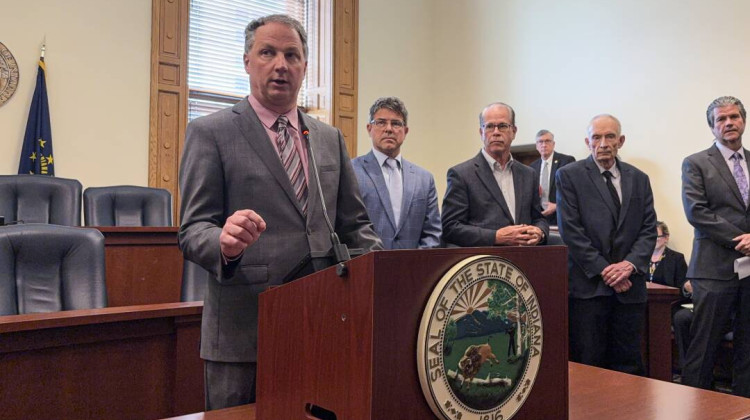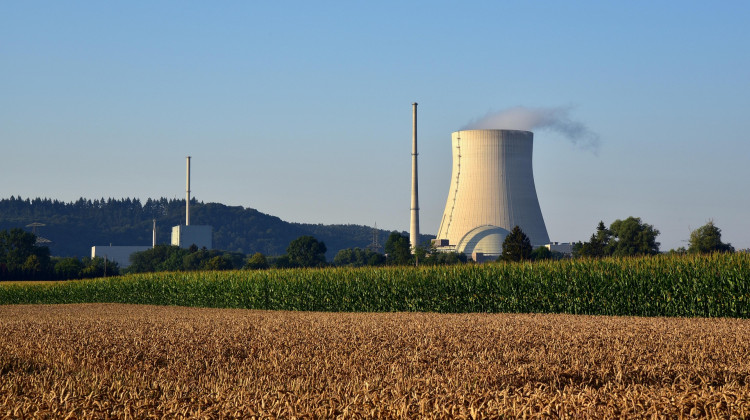Indiana’s General Assembly — dominated by Republican supermajorities in each chamber — approved new maps in October 2021. Shortly after, GOP Gov. Eric Holcomb signed them into law.
“Redistricting works best when people have influence over their voting districts,” said Julia Vaughn, who leads elections watchdog Common Cause Indiana, in a news release Thursday.
“However, too many leaders in Indiana have prioritized their own interests over the will of the people, which is reflected in our grade,” Vaughn continued. “Moving forward, it is critical that we not only make it easier for Hoosiers to make their voices heard in redistricting but also pass redistricting standards that make it more difficult for lawmakers to draw maps driven by political concerns instead of the public interest.”
CHARGE said it conducted surveys and “hundreds of on-the-ground interviews” to create the 112-page report. The letter grades, it said, reflect interviewees’ feedback.
Indiana was one of 13 states to earn a “D,” “D+” or “D-.” Eight had “F”s.
“It’s undeniable that manipulation of voting districts for political advantage is a direct threat to the health of our democracy,” said Dan Vicuña, national redistricting director for the nationwide Common Cause.
“However, that threat doesn’t derive from which party is up or down at a given moment,” he said. “It derives from the slicing and dicing of communities into districts in ways that make it impossible for their residents to have an effective voice in Congress, state legislatures and local government.”
Too few cooks in the kitchen?
Hoosier lawmakers and their advisers draw up congressional and state legislative districts through bills. Indiana Code includes a seldom-used politician commission as backup should the General Assembly deadlock.
Independent redistricting commissions with strong conflict-of interest protections are a gold standard for CHARGE.
The report declared Indiana’s maps a “clear partisan gerrymander” given the state’s Republican trifecta.
“Fair maps advocates faced an uphill struggle to make their voices heard,” the report said. “The legislature ultimately drew and passed maps that focused primarily on maximizing the number of districts that Republicans would win.”
It said lawmakers “erected structural barriers” that hindered public participation: few redistricting hearings, meetings during weekdays, on already-completed proposals.
But Hoosiers showed up in large numbers, the report noted, crediting organizers for building voters into a “much greater and more vocal presence than before.”
Resident participation
And they won some victories, according to the report. The 2011 maps fractured a Fort Wayne apartment complex between four Indiana House Districts and halved the town of Greencastle into two Indiana Senate districts. The 2021 maps addressed both.
The report additionally highlighted the Indiana Citizens Redistricting Commission, created by Hoosier reform coalition All IN for Democracy. The group included equal numbers of Democrats, Republicans and independents, and implemented conflict-of-interest restrictions to bar “political insiders and their close relatives” from serving as commissioners.
They took public input to establish district-drawing criteria, then led a public mapping contest and selected winners to propose to lawmakers.
“Although the redistricting process run by the General Assembly was secretive and partisan, this organizing engaged the public in the mapmaking process and prevented some communities from being split,” the report said.
It suggested creating a “culture of support” for such layperson-led redistricting, particularly at the local level, and advocating for more convenient public participation opportunities featuring draft maps.
 DONATE
DONATE







 Support WFYI. We can't do it without you.
Support WFYI. We can't do it without you.